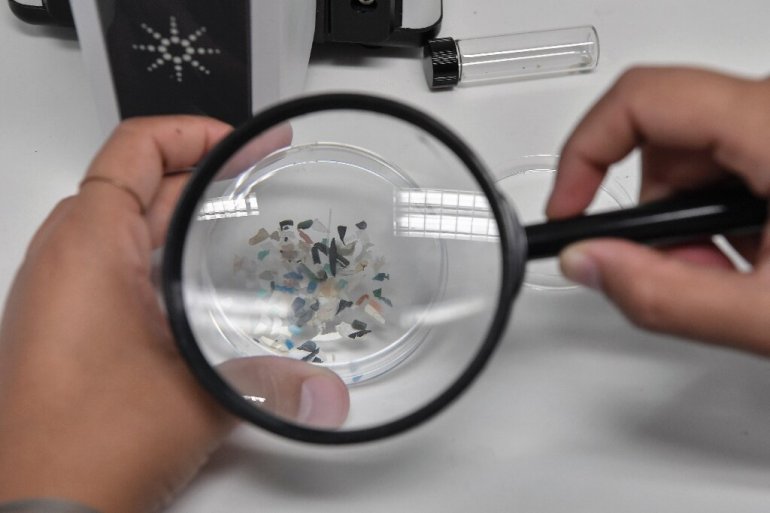A recent research study published in the journal "Environment International" on March 24 revealed the presence of microplastic particles in human blood for the first time, and the study warned of the possibility of these particles passing to different parts of the body.
wide spread
It is worth noting that today these invisible microplastics are spread all over the Earth, from the depths of the oceans to the heights of mountains, as well as in the air, soil and food chains.
The study examined blood samples from 22 healthy volunteers, and found microplastics in nearly 80% of them.
Plastic particles appear for the first time in human blood samples (Vis.org)
According to the report published by Phys.org, the study showed that half of the blood samples contained traces of polyethylene terephthalate, which is widely used in the manufacture of plastic bottles.
In addition, more than a third of the samples contained "Polystyrene", which is used in the manufacture of disposable food packaging as well as in many other products.
"This is the first time that we have actually been able to detect and measure these microplastics in human blood," said co-author Dick Vitak, an environmental toxicologist from Vrije Universiteit Amsterdam.
Possible health damage
Vitak also told the French news agency (AFP) that "this is evidence that our bodies contain microplastic particles, which is not supposed to."
Vitak also called for more research and scrutiny on how these molecules affect health.
Microplastics can seep into our bodies in a number of ways (Wikipedia-Martin Wagner)
Indeed, the presence of these microplastic particles raises many questions such as: Where do they end up?
And how can the body get rid of them?
And which members might you turn to?
Is it possible to accumulate or remain trapped in certain organs and not others?
Is it able to cross the blood-brain barrier, which is the barrier between blood and the brain's external cellular fluid?
The study stated that microplastic particles can seep into our bodies in several ways, either through air, water or food.
It is also found in many products such as toothpaste, lip gloss, and tattoo inks.
The study added that "scientifically, it is possible to transfer these micro-particles to different parts of the body through their passage in the bloodstream."
The need for more research
Vitak states that "it is possible that there are other types of microplastic particles in the blood that the study did not identify with. The plastic particles detected were all smaller than the diameter of the needles used to collect blood samples. Thus, if there are plastic particles with A larger diameter, the study will not be able to identify it.
There may be larger plastic particles in the blood that the study did not reveal (Shutterstock)
Alice Horton, a scientist for human pollutants at Britain's National Oceanography Center who was not involved in the study, commented on the findings, saying they "conclusively prove the presence of microplastics in the blood".
"Evidence from this study indicates that microplastics are not only circulating in the environment, but also in our bodies," Horton added.
Faye Cosero, a researcher in environmental pollution at the University of Portsmouth, Britain, who is not involved in the study, concludes that "despite the small sample size of study participants and the lack of data on participants' level of exposure to microplastics, I believe it will withstand scrutiny," as Cousero called for more research on the matter.

